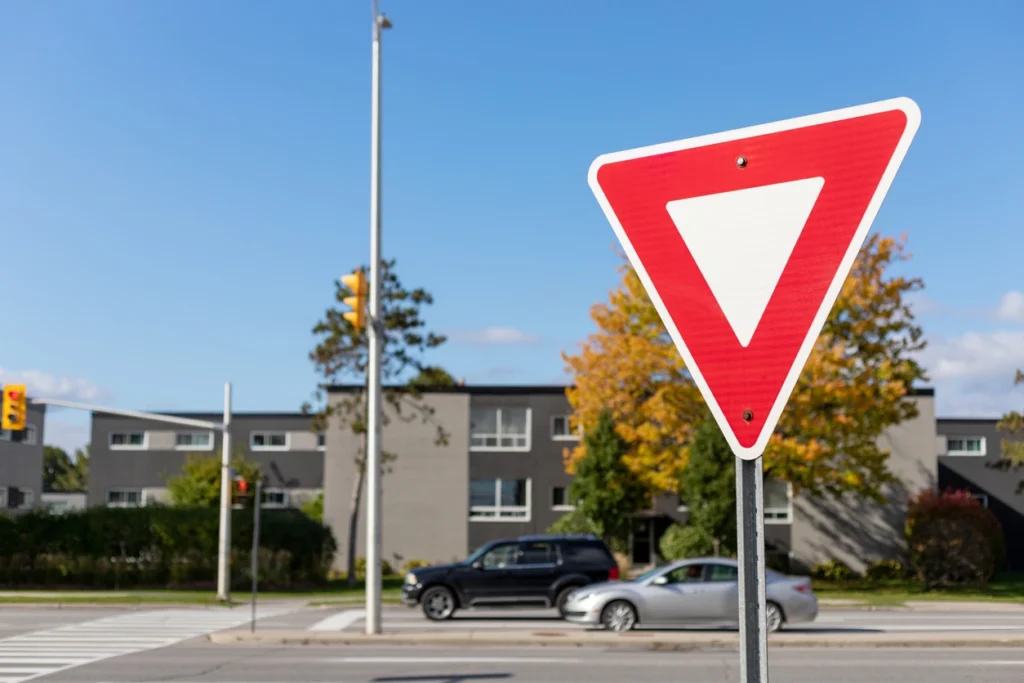Signs, the silent means of communication that mediate our daily journeys, are the unsung heroes of the urban landscape.
These visual cues provide important information in their various forms, guide the way and ensure the safety and order of our common spaces.
From the familiar red octagonal stop sign to complex junction symbols, signs play a vital role in how we interact with the built environment. This study delves into the multifaceted world of signs and classifies them according to function, materials and meaning in different contexts.
Traffic Signs:
The most common and critical types of signs are vehicular and pedestrian traffic signs. An important part of traffic management are red, yellow and green lights at intersections, stop signs telling you to stop, and directional arrows on complex road networks. Commonly understood road sign language provides a standardized approach to road navigation, improving safety and minimizing confusion. Regulatory signs dictate rules, warning signs warn of potential hazards, and directional signs provide important directional information. Traffic signs form the backbone of organized traffic systems, whether they direct the movement of vehicles or protect pedestrians.
Wayside signs:
An open road with a network of highways and side roads is based on a different class of signs: pedestrian-friendly wayside signs. These tags are important for travelers looking for destinations, services or attractions. Driving kilometers, exit signs, and route indicators form a unified system that helps drivers make informed decisions about their journey. Careful placement of these signs improves the road network, prevents distractions and ensures smooth and uninterrupted traffic flow.
Pedestrian signs:
As cities strive to become more, the role of signs to ensure pedestrian safety and comfort has emerged. Pedestrian signs contain a variety of visual cues, from crosswalk markings and junction signs to signs pointing to urban space. The integration of sensory elements and audio signals further improves accessibility and provides important information for people with visual or hearing impairments. Pedestrian signage not only increases safety, but also creates a vibrant and walkable urban environment.

Information and road signs:
Outside of traffic control, signs serve as an information aid and wayfinding tool in countless contexts. Information signs in public spaces, parks, museums, and campuses provide information about historical landmarks, points of interest, and services. Road signs, often designed with intuitive symbols and directional arrows, help visitors navigate a complex environment. Effective information and wayfinding signage improve the user experience and ensure that people reach and appreciate an easily traversable space.
Regulatory labels in urban planning:
In the field of urban planning, regulatory labels play a crucial role in shaping the behavior of communities. Zoning signs indicate land use rules that indicate whether an area is designated for residential, commercial, or industrial use. Parking signs indicate where vehicles can and cannot be parked, which contributes to the organization and efficiency of parking spaces in cities. These signs act as the backbone of urban regulation and promote order and consistency in the distribution and use of public spaces.
Material of signs:
The durability and visibility of signs are closely related to the materials from which they are made. Traditional signs, often made of metal or wood, have evolved with modern materials. For example, aluminum is a popular choice due to its lightness and rust resistance, which ensure the longevity of outdoor signs. Reflective materials improve visibility, especially in low light, which increases safety on the road. Advances in technology have introduced innovations such as electronic signs that can display dynamic information and adapt to changing conditions.
Digital and Interactive Signs:
In the digital age, traditional signs are being replaced by digital and interactive displays. Electronic billboards, digital kiosks, and interactive displays are increasingly common in urban environments. These dynamic signs offer the flexibility to display changing information, advertisements, and real-time updates. Interactive signs engage users by providing opportunities for wayfinding, information seeking , and even community participation. While the traditional static sign is still necessary, digital and interactive signs represent a new frontier in communication and engagement.
Cultural and symbolic signs:
Signs often transcend their practical functions to become cultural and symbolic representations of communities. Decorated with local emblems or artistic elements, city entrance signs act as a gate and welcome residents and visitors. Historical markers and cultural trails enhance a sense of identity and pride and preserve a community’s heritage and stories. Public art installations integrated into signs further blur the line between functional communication and artistic expression, enhancing the aesthetic appeal of public space.
Challenges and Considerations:
Although signs are essential for leadership and communication, there are challenges to maintaining their effectiveness. Visual clutter, with too many characters competing for attention, can confuse and reduce efficiency. Labels must find a balance between presenting important information and avoiding overload. In addition, considering universal design and inclusion is crucial to ensuring that signs are accessible to people of different abilities and language backgrounds. Regular maintenance and periodic evaluation of signage systems are critical to repairing wear and tear, maintaining visibility, and adapting to changing community needs.
Conclusion:
In the carpets of the built environment, is, signs appear both as functional needs and as cultural objects. From the simple directions of road signs to the rich stories conveyed by cultural signs, signs play an important role in how we perceive and interact with our environment. As technology evolves, the role of signs is poised to evolve, taking advantage of the possibilities offered by digital displays and interactive elements. Whether guiding us through the labyrinth of urban space or preserving the stories of our communities, signs quietly tell the stories of our journeys and promote the unity and vibrancy of the landscapes in which we live.
